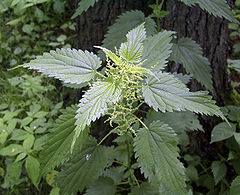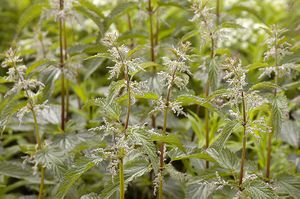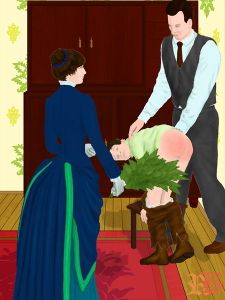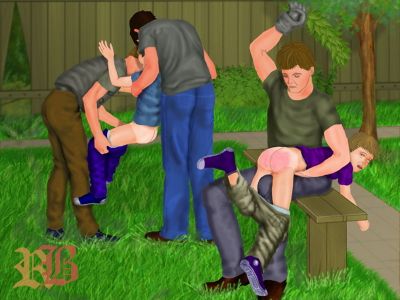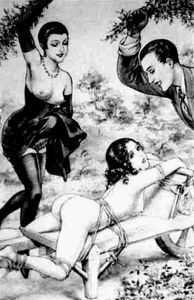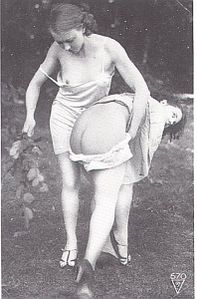Nettles
Nettle is the common name for any of between 30-45 species of flowering plants of the genus Urtica in the family Urticaceae. The most prominent member of the genus is the stinging nettle Urtica dioica, native to Europe, north Africa, Asia, and North America.
Nettles typically grow on waysides and near trees, shrubbery and buildings. In private lots, rampant nettles are often considered unwanted weeds and eradicated. Therefore nettles typically grow where humans don't care about them; nettles growing in a garden are considered a sign of neglect.
Stinging nettles
The stinging nettle is a herbaceous perennial, growing to three to six feet tall in the summer and dying down to the ground in winter. It has very distinctively yellow, widely spreading roots. The soft green leaves are 1 1/2 to 6 inches long, with a strongly serrated margin, a cordate base and an acuminate tip. Both the leaves and the stems are covered with brittle, hollow, silky hairs that were formerly thought to contain formic acid as a defence against grazing animals. Recent research has revealed the cause of the sting to be from three chemicals - a histamine that irritates the skin, acetylcholine, which causes a burning sensation, and serotonin, which encourages the other two chemicals.
Bare skin brushing up against a stinging nettle plant tends to break the delicate defensive hairs and release the trio of chemicals, usually resulting in a temporary and painful skin rash similar to poison ivy, though the nettle's rash and duration are much weaker. It is possible to evade the sting by touching the middle of the leaf or by stroking in the same direction as the hairs.
Non-punitive use
The plant can be prepared as a vegetable, either raw (like lettuce) or boiled (like spinach). In these preparations, the leaves are treated such that their sting is gone.
The plant's fibers have been used for thousands of years to make fabrics, similar to flax.
Stinging nettle also has a great number of medical and traditional medical uses. In some countries people traditionally have their skin whipped with stinging nettles to treat the pains of athritis and rheumatism. The releaving effect probably comes from the mild skin irritation, which results in a feeling of warmth. Already the Spartanian children had rubbed themselves with thistles to feel warmer at night.
Punitive use
In places where stinging nettles are abundant, such as Northern Europe, every child learns quickly to fear and avoid this plant. When fighting or doing nonsense, a child may sometimes chase or fling another child into nettles - a possibly traumatic experience which can amplify a fear into a phobia. The concept of being deliberately punished with stinging nettles is therefore extremely fearsome.
"Domestic punishment with nettles", artwork by Euticus (2011).
"The punishment nettles for theft in the garden", artwork by Euticus (2015).
Nettles in BDSM play and fiction
Nettles sting with thin, delicate hollow hairs on the stems and leaves. The hairs are like tiny pale bristles and so thin that they bend or collapse when they sting. They break open when touched (each hair stings only once) but nothing is felt unless that touch has actually driven them into the skin. Sideways pressure bends them over and breaks them, and usually wastes the sting.
The recipient is typically restrained and nude (or at minimum, the body part that is to be whipped is bared). Reactions vary, but most spankees show an intense burning irritation, which is also visible as reddening, and a series of little lumps, like small mosquito bites is common. The effect is very similar to the warm feeling that comes just after the sharp pain of a whipstroke fades. While a whipstroke comparatively fades rapidly, the glow can last for hours. There is also a seasonal difference. The first young shoots that come up in spring are very hot, sometimes shockingly so. The tall summer plants have fewer and milder stinging hairs. On callused or wrinkled skin, such as around a nipple, they may not be visible at all. Regular use of nettles for many spankees seems to lead to a partial immunity. A possible health risk that comes with nettle play is an allergic reaction.
Illustration by Lewis Bald from the novel L'Avatar de Lucette by James Lovebirch (1913).
Illustration by Georges Topfer.
Cinglants châtiments by Walter Flog; art by Herric (1932).
French punishment erotica from the Ostra Studio (c.1935).
One of the assets of whipping with stinging nettles is that it is practically noiseless, this can be useful in environments where spanking noise is an issue.
As the effect comes from the mere contact with the nettles, not from the force of the blow, and stinging nettles are soft and lightweight, practically any body part can be punished this way, if desired, including the genitals, breasts and similar sensitive areas. The most efficient way to use stinging nettles is to take one sprig or one leaf at a time, get down close to the target, and touch the hairs in, with a close enough view that you can watch the hairs go in straight. When you can't work in that close, at least make sure that the stem or leaf comes down flat to the skin of the target area.
People administering diaper discipline may choose to line the bottom's diaper with stinging nettles to enhance their discomfort and humiliation.[1]
Stinging nettles can also used as a birch for a variation on whipping. Here it functions almost like a strap or paddle, sensitizing the skin without bruising. It is also silent, though the spankee may not be! Whipping a person with stinging nettles for corporal punishment is a seldom used method and was never anywhere as common as birching or switching. It is described in some autobiograhies and in a few spanking novels and spanking stories. Apparently stinging nettles were quite popular in Theresa Berkley's 19th century establishment, though.
The mainstream Russian crime drama Mytar (1997) features a M/F spanking with nettles.
The spanking video And for You I Will Come as Well from Lupus Pictures shows three young girls punished by having their underwear stuffed with nettles.
Picking stinging nettles
The person who picks the stinging nettles (and executes such a punishment) will usually wear gloves so that he or she will not be stung themself. They like to grow in deep rich soil with moist, shady conditions. You are more likely to find them on an old farm gone back to trees than on the thin soil of a mountainside. Because the hairs are so delicate, be careful how you cut (not pick) and transport the stinging nettles. Also, as soon as they are cut, they start to wilt, and the stinging hairs wilt too. The best way to carry them is in a sealed container with a wet rag, leaves or moss in the bottom. The small spring shoots travel well in a coffee can with a plastic top; for the larger summer stems, try something like a five-gallon bucket with a snap-on lid or foil cover. Sealed up like this, nettles can last several days if kept cool.
References
See also
- Urtication
- Collection des Orties Blanches (spanking novel publisher)
- The Discipline of Odette (a classic CP novel by Jean Martinet featuring a whipping with nettles)
- Nettles Corporation (a spanking video producer)
External links
- Sado-botany: use of nettles in BDSM games, a FAQ
- Picture of a male miscreant about to sit down on a bunch of nettles (Adult site)
- Spanking With Nettles on Urtication.com (Adult site)
- Nettles In Their Panties on The Spanking Blog (Adult site)
- Photo of nettle-covered female pubis (Adult site)
- Nettle treatment BDSM-style (F/F) (Adult site)
- Cropping with nettles at the genitals (F/F) (Adult site)
- Nettle drawing with bondage by Waldo (M/F) (Adult site)
- Another example photo (Adult site)
- Brennesseln - Flämmen/Nettling/Urtikation (in German, with photos)(Adult site)
See also [ Garden of Torture#Irritating plants for torture ]
- More information is available at [ Wikipedia:Nettle ]
| List of Spanking Implements |
|---|
|
See "sting and thud" for more on this distinction. |
Chat rooms • What links here • Copyright info • Contact information • Category:Root
